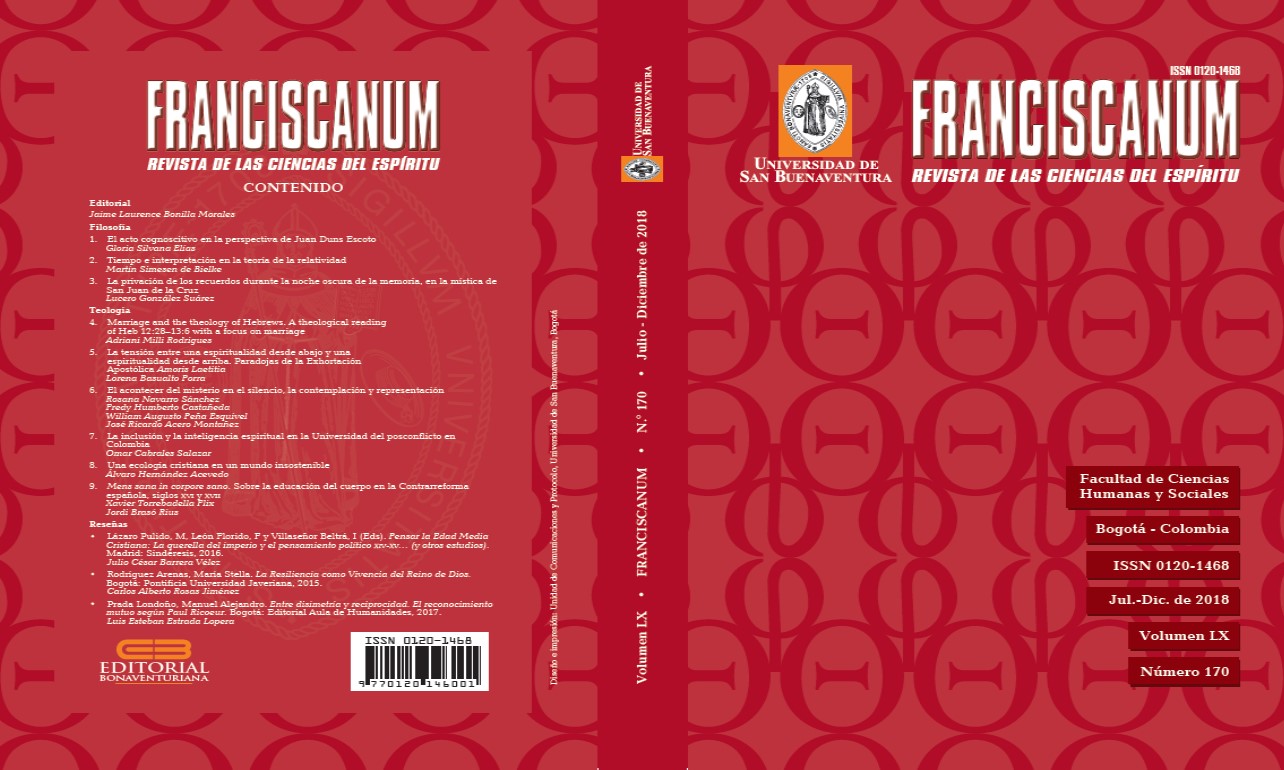This journal provides immediate open access to its content, based on the principle that giving the public free access to research helps a greater global exchange of knowledge.
Therefore, the Creative Commons 4.0 Attribution Attribution - Equal Share (by-sa) License is accepted: The commercial use of the work and the possible derived works is permitted, the distribution of which must be done with a license equal to that regulates the original work.
http://creativecommons.org/licenses/by-sa/4.0/
Along these same lines and in line with the Open Access policy, it is clarified that the authors maintain their rights to articles, without restrictions and, in the same way, they maintain their publication rights, without restrictions. They are only asked to reference the number of the Franciscanum magazine where the article initially appeared.
Abstract
Within the theory of relativity lies the problem of reality or unreality of relativistic phenomena related to space-time (time dilation, length contraction, break of simultaneity caused by the movement of scales and watches). The first part of this paper will outline the framework related to this controversial issue. After the framework is established some of Einstein’s mental experiments are taken into consideration to demonstrate why relativistic time cannot be characterized either as real, or as mere appearance. Throughout this critical analysis the function of the expression «as
if» plays an important role in understanding why time can be seen as an interpretation rather than a real «thing» or an «illusion».



















